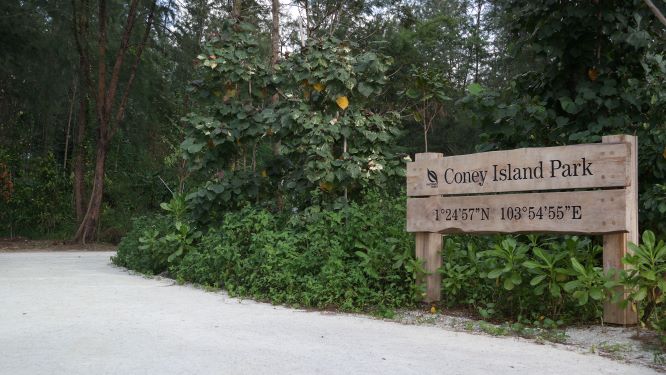Coney Island Park: Where Nature Meets Adventure
Coney Island Park in Singapore has earned a reputation as a tranquil oasis amid urban life. This enchanting island is a beloved destination, thanks to its unique blend of pristine beaches, lush forests, and captivating wildlife.
As you step onto its shores, you’ll discover a haven for nature enthusiasts, hikers, and beach lovers. Interested? Then join us as we uncover the allure of this remarkable island retreat!
What is Coney Island in Singapore?
— From julesvansevenant
Coney Island, also known as Pulau Serangoon, lies off the coast of northeastern Singapore near Punggol. Originally 13 hectares in size, it expanded to 100 hectares through reclamation. What’s more, a 50-hectare park managed by the National Parks Board opened on the island in October 2015.
Today, Coney Island Park is a haven for flora and fauna, being home to around 80 bird species (including baya weavers) and flourishing mangrove forests full of life.
If you’re coming here, the first thing to know is that it’s an environmentally conscious destination, emphasising sustainability through energy and water conservation, recycling, and repurposing natural materials.
For example, timber from uprooted Casuarina trees finds new life as park signage, seats, benches, boardwalks, and exhibits at Casuarina Exploration. As such, come here with appropriate respect for the environment and green living.
Quick Details on Coney Island, SG
Location: Punggol Promenade Nature Walk, Singapore 829325 (Google Maps)
Website: https://coneyisland.sg/
Hours: 7 AM to 7 PM (gates close at 7 PM)
Fees: No entry charge.
Bike rental: Typically between S$6 to S$8 per hour.
Accessibility: Wheelchair-accessible and barrier-free access at the East and West ends; cycling is allowed on the main path.
Age restriction: None, but some areas of the terrain are rugged and may not be suitable for young children or individuals with mobility challenges.
Pet-friendly: Yes, but dogs must be put on a leash or have a carrier.
Electricity and water availability: To preserve the park’s rustic charm and natural environment, there is no electricity or piped water infrastructure on the island.
Food and beverage: Coney Island is designed to maintain a natural environment, so there are no restaurants, cafes, or shops on the island.
Restrooms: There is a toilet available at the east entrance.
Suggested apparel: For protection against insects like sandflies, it’s advisable to don long pants and closed-toe shoes or hiking boots.
Garbage disposal: Absolutely no littering is allowed on Coney Island, as it can harm wildlife. Please pack and remove your trash from the island for proper disposal. Ensure that you clean up after your pets and keep them on a leash.
Prohibitions: No camping, no fishing, no cycling on the boardwalk, no feeding of monkeys, no plastic bags or water bottles allowed in the park.
Best Time to Go
— From jamjam2324
The best time to visit Coney Island Park in Singapore is during the cooler and drier months, typically between December and February.
This period is considered the northeast monsoon season when temperatures are more comfortable and there’s less rainfall.
Avoid visiting during the peak of the rainy season, which usually occurs from November to January, as heavy rainfall can make the trails muddy and less enjoyable.
Additionally, Singapore’s hot and humid weather during the rest of the year may lead to discomfort while exploring the park.
How to Get There
MRT: To get to Coney Island Park by MRT in Singapore, take the MRT to Punggol Station, which is located in the northeastern part of the city. Depending on your starting location, you might need to make a transfer to the North East Line (NEL) or the Punggol LRT Line to reach Punggol Station. After arriving at Punggol Station, exit the MRT station and head to the ground level to continue your journey to Coney Island Park.
Bus: To reach Coney Island Park West Entrance from Punggol Interchange, board bus 84 bound for Punggol Point Park/Punggol Settlement. Afterwards, walk approximately 500 metres east along the Punggol Promenade Nature Walk.
Car: Enter “Punggol Settlement” into your GPS to guide you to the car park near the west entrance, where you can park your car.
Taxi/taxi alternatives: Inform the driver that you want to go to Coney Island in Singapore. You can mention either the east or west entrance based on your preference.
What to Do in Coney Island
Go on a cycling adventure along designated routes
— From monjie
Bring your own bicycle or rent one from Punggol Point Park for a nature-filled ride down Coney Island’s main spine. Cycling enthusiasts can also rent bicycles from GoCycling near the west entrance of Coney Island.
Cycling Route:
You can enjoy a leisurely journey along the 2.5 km Coney Island Park Connector, with intermittent views of Serangoon Reservoir.
The best part is that you can easily go on to explore nearby attractions afterwards, like Punggol Waterway Park or Punggol Settlement.
Snap photos of nature
— From thedistanceview
Amble along the boardwalk and keep a keen eye out for wildlife—you might capture some stunning shots! Coney Island in Singapore is home to butterflies, birds, and squirrels, so there’s plenty to capture.
The island also houses a captivating array of flora and fauna, some of which are nationally threatened species (like the white-bellied sea eagle), perfect subjects for your camera.
Challenge yourself on the obstacle course
— From natural_lover_vk18
Built from reclaimed timber, including uprooted Casuarina trees, the eco-friendly Casuarina Exploration playground features a mini obstacle course. Test your dexterity on a wooden bridge, stepping stones, and log fences!
(…or you can pretend to do all of the above and just take a picture of the obstacle course. No one will be the wiser!)
Hit the beach
— From joanne08_009
Sunseekers can bask on any of the five beaches, aptly named Beach A, B, C, D, and E, easily located with the help of signboards across the island. For those seeking a quieter spot, there’s even a somewhat “secret” beach not widely known to the public.
To find it, follow the main trail from the west entrance and walk towards Lorong Halus East Gate to reach the secluded area. Trust us – it’s worth it.
Even if you stay on the more known beaches, though, you’re still guaranteed a good time. Watching the sunset on Coney Island’s beaches lets you feel the cool sand beneath your feet and the gentle sea breeze.
Bond with your furbabies
— From _furry4paws
While there isn’t a designated dog trail in Coney Island Park, most visitors opt to follow the common path. However, there are numerous hidden spots within the forest, including secret beaches.
To explore the vast area comfortably, it’s advisable to bring your own bicycles or rent them. Some rental bikes even come with carriers for your furry friend if they need a break.
See (and respect) exotic wildlife
— From Vwhh
Because it’s rich in wildlife, there’s a big chance you’ll come across some macaques and even the occasional wild boar in Coney Island Park!
Do not feed monkeys and other animals, by the way. It disrupts their natural foraging habits and affects their role in seed dispersal. Avoid eating or carrying plastic bags around macaques too, as it can make them bolder due to their association with food.
Have a relaxing picnic
— From princess.kyoko
With nature as your backdrop, a picnic at Coney Island Park promises relaxation and rejuvenation.
A comfortable picnic blanket, a wicker basket filled with your favourite snacks and sandwiches, refreshing beverages, and reusable utensils are all you’ll need. Don’t forget a trash bag to keep the park clean – clean up your picnic area before you go!
Explore the mangrove trail
— From maria_semenova17
Coney Island, like Sungei Buloh Wetland Reserve, offers a lot of stunning mangrove views. Follow the trail to Beach C for a muddy adventure, but watch your step on the boardwalk to keep your footwear clean.
Also, keep an eye out for mudskippers and water snakes, which are sometimes visible after a rainy spell.
Hike up a sweat
— From omarbassalti
Coney Island is known for having one of the best hiking trails in Singapore. The entire route from the west to east entrance spans just 2.4 kilometres, making it easily walkable for visitors who prefer not to cycle.
These rustic trails guide you through the island’s natural wonders, providing an immersive experience in its rich biodiversity.
Admire dozens of tree species
— From elise_vivre.pleinement
The park boasts around 86 tree species, inviting you to take a nature walk and relish the lush greenery in its native habitat. Keep an eye out for the two remaining native cycad trees, transplanted from mainland Singapore, which are locally rare in the wild.
Go into a bird-watching hideout
— From rotipitta
Coney Island is a haven for birdwatchers. With dozens of bird species, including nationally threatened ones like the black-crowned night heron and spotted wood owl, it’s a prime location for birdwatching, second only to Sungei Buloh Wetland Reserve.
You can use the specially designed bird-watching hideouts, nestled in green cover, to observe these feathered friends without causing any disturbance.
Ogle an otter (or two!)
— From wehavesecret
If you’re lucky, you can be one of the few Coney Island visitors who can spot a cute, smooth-coated otter!
Despite being critically endangered in Singapore, otters have been seen regularly at Sungei Buloh Wetland Reserve since the 1990s and are increasingly spotted in Pulau Ubin, Western Catchment Area, and Coney Island.
When encountering otters, never touch, chase, or corner them; observe from a distance to avoid startling them. Keep your dog on a tight leash to ensure its safety and prevent chasing.
Avoid feeding the otters, as they have natural food sources; maintaining this is crucial for the ecosystem’s well-being.


